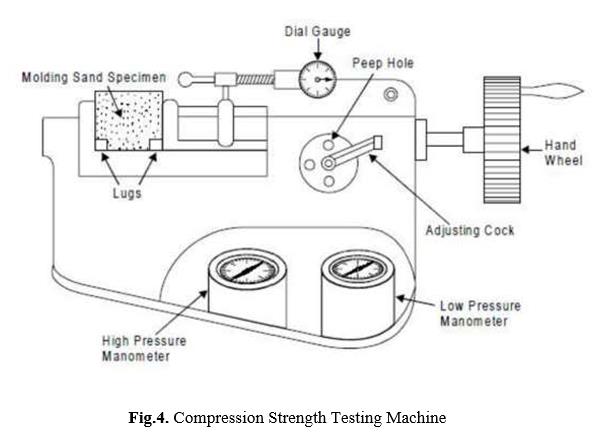Properties of Moulding Sand:Molding sand must possess the properties like permeability, flow ability, collapsibility, adhesiveness, strength and refractoriness. The properties are determined not only by the chemical composition, but by the amount of clayey matter in the sand, by its moisture content, and lastly by the shape and size of the silica sand grains.
Porosity:Molten metal always contains a certain amount of dissolved gases, which are evolved when the metal freezes. Also, the molten metal ,coming in contact with the moist sand, generates steam or water vapor .If these gases and water vapor evolved by the moulding sand do not find opportunity to escape completely through the mould they will form gas holes and pores in the casting. The sand must, therefore, be sufficiently porous to allow the gases or moisture present or generated within the moulds to be removed freely. When the moulds are poured. This property of sand is called porosity or permeability.
Flow ability:Flow ability of moulding sand refers to its ability to behave like a fluid so that, when rammed it will flow to all portions of a mould and pack all-round the pattern and take up the required shape. The sand should respond to different moulding processes. Flow ability increases as clay and water content increases.
Collapsibility: After the molten metal in the mould gets solidified the sand mould must be collapsible so that free contraction of the metal occurs, and this would naturally avoid the tearing or cracking of the contracting metal.
Adhesiveness:The sand particles must be capable of adhering to another body, i.e.. they should cling to the sides of the moulding boxes. It is due to this property that the sand mass can be successfully held in a moulding box and it does not fall out of the box when it is removed.
Cohesiveness or Strength:This is the ability of sand particles to stick together. Insufficient strength may lead to a collapse in the mould or its partial destruction during conveying, turning over or closing. The closing may also be damaged during pouring the molten metal. The strength of moulding sand must, therefore, be sufficient to permit the mould to be formed to the desired shape and to retain this shape even after the hot metal is poured in the mould. This property of sand in its green or moist state is known as green strength. A mould having adequate green strength will retain its shape and will not distort or collapse even after the pattern is removed from moulding box. The strength of sand that has been dried or baked is called dry strength .It must have then strength to withstand erosive forces due to molten metal, and retain its shape.
Refractoriness:The sand must be capable of withstanding the high temperature of the molten metal without fusing. Moulding, sands with poor refractoriness may burn on to the casting. Refractoriness is measure by the sinter point of the sand rather than its melting point.






Get all latest content delivered to your email a few times a month.